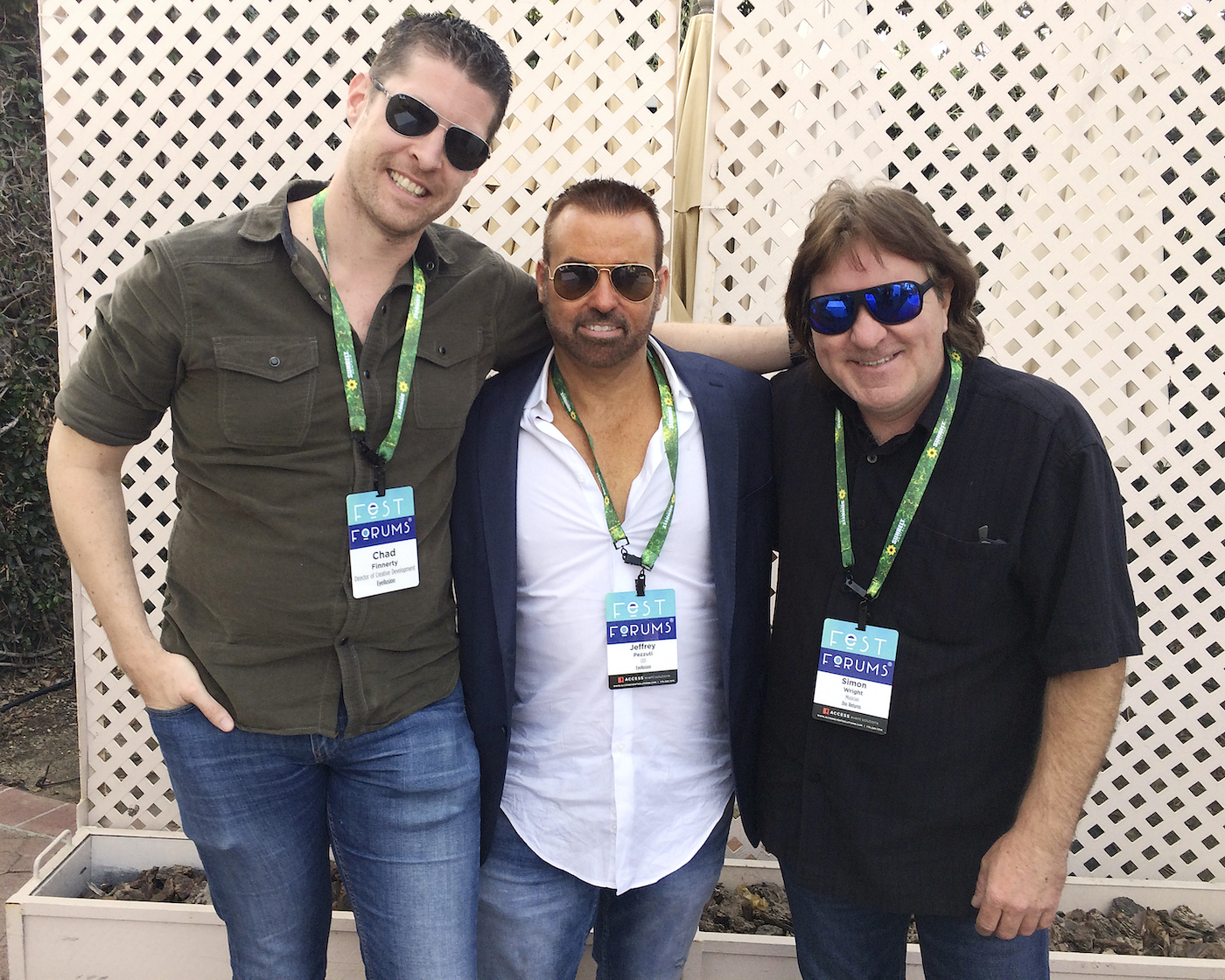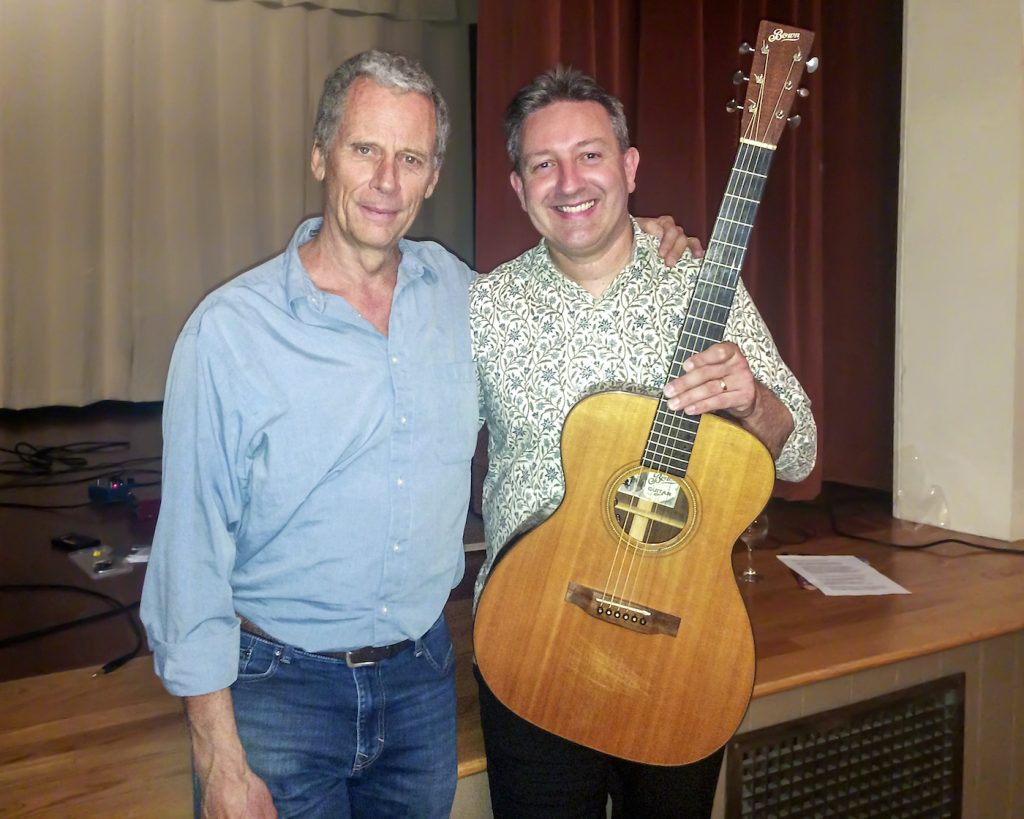Holographic Metal Musicians to Live Acoustic

To say it’s a new day for live concert music fans is clearly true. By the use of holograms with audio, many great classic rock to metal musicians who have passed away are being “reunited” on stage with their original band mates for an almost all-live concert.
This surreal experience was tested at the Wacken Open Air festival in Germany [2017], where Eyellusion Los Angeles created a hologram of respected metal frontman Ronnie James Dio, who died in 2010. The Dio hologram débuted on stage with heavy metal band the Dio Disciples, whose current members are Simon Wright on drums, Craig Goldy guitar, Scott Warren keyboards, and Bjorn Englen bass. The festival attendees surpassed 75,000. Following that, “Dio Returns: The World Tour” with the Ronnie hologram took off November 2017 for 80 worldwide dates and was at the Pollstar Awards in Los Angeles 2017. Jeff Pezzuti founded Eyellusion in 2015 and partnered with Frank Zappa’s son, Ahmet, and Dio’s widow, Wendy.
How acceptable is this for the band and their fans? In my interview with the “Dio Disciple” drummer Wright and the Eyellusion creative director Chad Finnerty at FestForums SB, we find out:
Q: Did you two know each other prior?
A: Simon: No, we met at the Wacken Festival actually. We came together with the Eyellusion team, who did the hologram in Germany, so we just got thrown into it, and there was so much stress when we did that first show. I had to play on a drum 30-foot high-riser, and the keyboard player was next to me on a lower riser; I hadn’t played on a riser in years. I had to play to a click track to keep on pace with the audio of Ronnie, which Chad had to start off-stage. Chad had to be where we could see him in case something went wrong – we had to keep eye contact with him. It was the first of everything and so much pressure.
How do you think it went?
Simon: Well, that show went… it was a blur, but we got it done. It was our show, the Dio Disciples; we did our set and a bunch of Ronnie’s song first, and right at the end it was us with the hologram. It was a great crowd, it was late at night. The hologram did the song “We Rock.”
Chad: It launched pretty much everything we’re doing now, got the name out there. It was the first time it was done at a festival, you know, and proved that the concept worked. It did its job. That was the first incarnation. So, now we’ve refined it, and it’s photo-real, it looks like Ronnie. A lot of time and creation goes into this, precision and care, constant review with Ronnie’s wife, Wendy, to make certain she’s happy with it.
Simon, as a musician, is this hard for you?
Simon: It was emotionally at first, but after a while you kind of just go with it – it’s like a big backdrop that looks really real, its not resurrecting Ronnie. People get stressed out by it, and I can understand that, but we’re his family. It’s just another movement forward in technology. It’s the next form of entertainment, and they should come to the show. It’s a rock show, it’s not stale or artificial. We would never hurt Ronnie or do anything derogatory. We loved him.
Do you get to select the songs the hologram is on?
Simon: We do get to talk about it. It depends on the footage and performance we are looking at, so it’s the best for the people. Ronnie has such a large catalog of music to choose from. There are new songs for the shows next year. We perform as the Dio Disciples and Tim Ripper Owens and Oni Logen sing, and then there are songs with the Ronnie hologram singing, and we plan to have all three of them singing together starting spring 2019 on our tour, with stops in the U.S.
Chad: It’s a constantly evolving set list as we go over the years. We can change the generations and pay tribute to whatever period of time we want to go out with.
Do you see this as something other legend bands may want to do?
Simon: Its up to them. We’re just doing it from the stand point of Wendy Dio wanting to keep Ronnie and his music alive. As a band, we want to keep his legacy alive. For those who never got to see him live, this is as close as you’re going to get.
What do you want the fans to know?
Simon: Just again, there is so much criticism out there, and I was the same way, when a new technology comes out. But this is a technology that is going to help those fans to understand what Ronnie is all about. Its not a movie in a movie theater, where you just sit and the music is piped in. Its a rock show, it’s live music, it’s loud – go get a beer, enjoy yourself, that’s the kind of vibe we’re talking about.
Chad: Tribute bands have been around for a long time; we’re taking it to a whole other level. It’s having the original band play and we’ll do our best to represent who we lost. We’re also working with holograms of Frank Zappa and we just announced pianist Glen Gould. There are many more in the works. What we bring is created by artists. It’s for all the right reasons, bringing a legend back to the stage. We are ahead of the game, as soon as VR comes to concerts, we have the content.
British Guitarist Carroll at SBAMA

U.K. guitarist Clive Carroll gave a concert at the Alchemy Theater, SB, as part of the Santa Barbara Acoustic Music Association’s [SBAMA] Wooden Hall Concert series, co-sponsored by the SB Trust for Historic Preservation and LR Baggs Speakers.
Rushing in from LAX, he set up quickly and started with “Mississippi Blues,” followed by, “The Kid from Claire,” “Thaxted Town” based on Gustav Holst’s “Jupiter” [The Planets] and “Moorish Dance,” “Oregon,” “Waltz Piece” with a nod to the “Suite for Jazz Orchestra” by Dmitri Shostakovich, and a six-part “Renaissance Suite” tuning his low E string to G, and A tuned to D. He took a quick 10 and began set two with an eclectic mix of “In the Deep,” an Icelandic teen-pop song he wrote for his daughter, and a 12-minute “Scottish Suite”. The highlight of the evening was “Good Bye Pork Pie Hat”, a jazz composition written by Charles Mingus in 1959 and played by top artists including Jeff Beck and John McLaughlin. His encore, “And I Love Her” [Lennon/McCartney], with the iconic four-note riff by George Harrison, left us with a sentimental mood.
Post-concert, he and I talked about his various tunings, Hz, and string preferences. Clive said, “I use round wounds I get in the U.K., with a size 56 bronze on the bass strings [E and A] to get that warmth. In Milwaukee it was so cold, I had to tune in 436 Hz to get the mids; here in SB I upped it to 440.” His guitar is a Ralph Bown acoustic with internal mic and bottom amp plug [York].
In review, he is completely drawn into the music, plays seamlessly with eyes closed, left foot keeping the beat. Like Beck, he uses his fingernails and flesh to pluck the strings [rare pick], and decorates with speed variation and light tapping harmonics. His style is using the main melody on top of a chorus of chords and harmonies driven by the other fingers. Both hands are equally working in various patterns for a whole sound. The variety pack of song genres suits any audience, but would have preferred more jazz and blues, as he has the chops. Amplification and the Looper effect pedal [record/overdub while playing] was a bit overdone; however, to the uneducated it seems magical. Assuming his tour is exhausting, his performing acumen was brilliant.
I asked SBAMA founder Kevin Gillies how he got Clive here, and he said, “Chet Atkins is considered by many to be the godfather of fingerpickin’. The other major groundbreaker was Michael Hedges. Those two styles merged to become modern fingerstyle guitar. Tommy Emmanuel is widely thought to be the prime leader of today’s modern fingerstyle. When I asked Tommy who the next great, unknown guitarist is, he immediately said Clive Carroll.
“The SBAMA’s mission is Acoustic Music and Education, to help transform the concert experience from a passive to active engagement. Clive did a super job of talking about how he incorporates the history of music into his own compositions, and what he’s actually doing on guitar. The guitar is the most ubiquitous and democratic instrument on Earth, adaptable to many different styles and cultures. It can be utilized by virtually anyone to express themselves, and acoustic denotes our tie back to our very primitive roots, using natural resonating materials to communicate. The only other that compares is the human voice.”
411: www.sbama.org
www.sbcelebration.org
www.MusicArtsFestival.com





